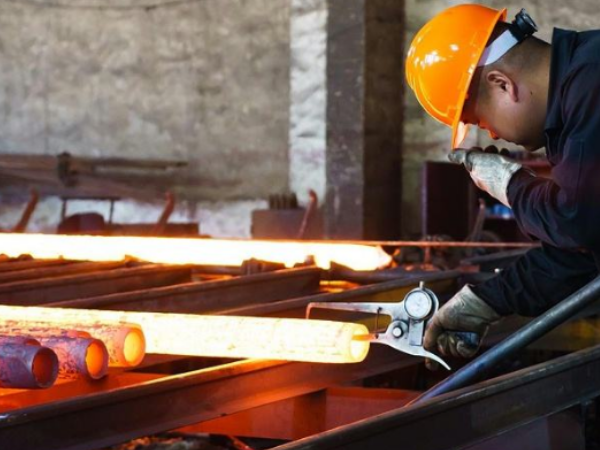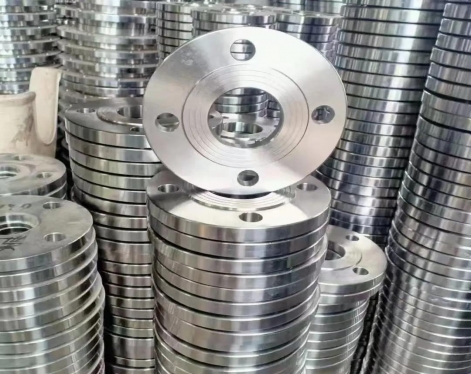The quenching of seamless pipe is a dual heat treatment of quenching plus high temperature tempering, the purpose of which is to make the workpiece has good overall mechanical properties.
Seamless pipe without quenching hardness less than HRC28, relatively soft, not wear-resistant; quenched hardness can be (note that it can be) greater than HRC55, wear resistance is better, but this is a small cross-section, the cross-section is slightly larger, the hardness obtained will be reduced. And the possibility of winter quenching and cracking is also there. Do not use surface nitriding treatment, although the surface hardness can be increased a lot, but the base material will be very low hardness. Although wear-resistant, but will be pressed out of small pits.
Quenched steel has two categories of carbon quenched steel and alloy quenched steel, whether it is carbon steel or alloy steel, its carbon content control is relatively strict. If the carbon content is too high, after tempering the workpiece strength is high, but not enough toughness; carbon content is too low, toughness increased and insufficient strength. In order to make the tempered parts to get a good overall performance, the general carbon content control in 0.3 ~ 0.5%.

When tempering and quenching, the whole section of the seamless pipe is required to be quenched, so that the seamless pipe gets microstructure with fine needle-like quenching martensite as the main part. By high-temperature tempering, the microstructure is obtained with uniform tempered sothothite as the main microstructure. Small plants cannot engage in metallographic analysis per furnace, and generally only hardness tests are made, which means that the hardness after quenching must reach the quenching hardness of the material, and the hardness after tempering is checked according to the chart requirements. Seamless pipe quenching operation, must be carried out in strict accordance with the process documentation.
What issues need to be noted during the quenching treatment of seamless pipes?
1) Quenching of seamless pipe: The steel is a medium carbon structural steel with good cold and hot working properties, good mechanical properties, and low price and wide sources, so it is widely used. Its biggest weakness is low hardenability, and it is not suitable for workpieces with large cross-sectional size and relatively high requirements.
2) The quenching temperature of the steel is at A3+(30~50) ℃. In practice, the upper limit is generally taken. High quenching temperature can make the workpiece heating speed up, surface oxidation is reduced, and can improve work efficiency. In order to make the workpiece austenite homogenization, it needs sufficient holding time. If the actual furnace charge is large, it is necessary to extend the holding time. Otherwise, the phenomenon of insufficient hardness due to uneven heating may occur. But the holding time is too long, will also appear coarse grain, oxidation decarburization serious drawbacks, affecting the quality of quenching. We believe that if the furnace charge is greater than the provisions of the process documentation, heating and holding time needs to be extended by 1/5.
3) Because of the low steel hardenability, so the cooling rate should be used for a large 10% brine solution. After the workpiece into the water, should be quenched, but not cold through, if the workpiece in the brine cold through, it is possible to make the workpiece cracking, this is because when the workpiece cooled to about 180 ℃, austenite quickly transformed into martensite caused by excessive tissue stress. Therefore, when the quenching workpiece is fast cold to the temperature region, should take the slow cooling method. As the water temperature is difficult to grasp, the operation must be based on experience, when the workpiece in the water shaking stop, you can come out of the water air cooling (such as oil cooling better). In addition, the workpiece into the water should move rather than static, and should make regular movement according to the geometric sizes of the seamless pipe. Static cooling medium plus static workpiece, resulting in uneven hardness, uneven stress and deformation of the workpiece, or even cracking.
4) The hardness of the steel tempered parts after quenching should reach HRC56~59, and the possibility of lower cross-section is large, but not lower than HRC48, otherwise, it means that the workpiece has not been completely quenched, and the organization may appear soxhite or even ferrite organization, and this organization is still retained in the matrix through tempering, and the purpose of tempering cannot be achieved.
5) Seamless pipe quenching after high-temperature tempering, heating temperature is usually 560 ~ 600 ℃, hardness requirements for HRC22 ~ 34. Because the purpose of tempering is to get a comprehensive mechanical properties, so the hardness range is relatively wide. But the drawings have hardness requirements, we must adjust the tempering temperature according to the requirements of the drawings to ensure hardness. Such as some shaft parts require high strength, hardness requirements are high; and some gears, with keyway shaft parts, because after tempering, but also milling, insert processing, hardness requirements are lower. Tempering holding time, depending on the hardness requirements and the size of the workpiece, we believe that the hardness after tempering depends on the tempering temperature, and tempering time is not much, but must be tempered through, the general workpiece tempering holding time in an hour or more.
Seamless pipe without quenching hardness less than HRC28, relatively soft, not wear-resistant; quenched hardness can be (note that it can be) greater than HRC55, wear resistance is better, but this is a small cross-section, the cross-section is slightly larger, the hardness obtained will be reduced. And the possibility of winter quenching and cracking is also there. Do not use surface nitriding treatment, although the surface hardness can be increased a lot, but the base material will be very low hardness. Although wear-resistant, but will be pressed out of small pits.
Quenched steel has two categories of carbon quenched steel and alloy quenched steel, whether it is carbon steel or alloy steel, its carbon content control is relatively strict. If the carbon content is too high, after tempering the workpiece strength is high, but not enough toughness; carbon content is too low, toughness increased and insufficient strength. In order to make the tempered parts to get a good overall performance, the general carbon content control in 0.3 ~ 0.5%.

When tempering and quenching, the whole section of the seamless pipe is required to be quenched, so that the seamless pipe gets microstructure with fine needle-like quenching martensite as the main part. By high-temperature tempering, the microstructure is obtained with uniform tempered sothothite as the main microstructure. Small plants cannot engage in metallographic analysis per furnace, and generally only hardness tests are made, which means that the hardness after quenching must reach the quenching hardness of the material, and the hardness after tempering is checked according to the chart requirements. Seamless pipe quenching operation, must be carried out in strict accordance with the process documentation.
What issues need to be noted during the quenching treatment of seamless pipes?
1) Quenching of seamless pipe: The steel is a medium carbon structural steel with good cold and hot working properties, good mechanical properties, and low price and wide sources, so it is widely used. Its biggest weakness is low hardenability, and it is not suitable for workpieces with large cross-sectional size and relatively high requirements.
2) The quenching temperature of the steel is at A3+(30~50) ℃. In practice, the upper limit is generally taken. High quenching temperature can make the workpiece heating speed up, surface oxidation is reduced, and can improve work efficiency. In order to make the workpiece austenite homogenization, it needs sufficient holding time. If the actual furnace charge is large, it is necessary to extend the holding time. Otherwise, the phenomenon of insufficient hardness due to uneven heating may occur. But the holding time is too long, will also appear coarse grain, oxidation decarburization serious drawbacks, affecting the quality of quenching. We believe that if the furnace charge is greater than the provisions of the process documentation, heating and holding time needs to be extended by 1/5.
3) Because of the low steel hardenability, so the cooling rate should be used for a large 10% brine solution. After the workpiece into the water, should be quenched, but not cold through, if the workpiece in the brine cold through, it is possible to make the workpiece cracking, this is because when the workpiece cooled to about 180 ℃, austenite quickly transformed into martensite caused by excessive tissue stress. Therefore, when the quenching workpiece is fast cold to the temperature region, should take the slow cooling method. As the water temperature is difficult to grasp, the operation must be based on experience, when the workpiece in the water shaking stop, you can come out of the water air cooling (such as oil cooling better). In addition, the workpiece into the water should move rather than static, and should make regular movement according to the geometric sizes of the seamless pipe. Static cooling medium plus static workpiece, resulting in uneven hardness, uneven stress and deformation of the workpiece, or even cracking.
4) The hardness of the steel tempered parts after quenching should reach HRC56~59, and the possibility of lower cross-section is large, but not lower than HRC48, otherwise, it means that the workpiece has not been completely quenched, and the organization may appear soxhite or even ferrite organization, and this organization is still retained in the matrix through tempering, and the purpose of tempering cannot be achieved.
5) Seamless pipe quenching after high-temperature tempering, heating temperature is usually 560 ~ 600 ℃, hardness requirements for HRC22 ~ 34. Because the purpose of tempering is to get a comprehensive mechanical properties, so the hardness range is relatively wide. But the drawings have hardness requirements, we must adjust the tempering temperature according to the requirements of the drawings to ensure hardness. Such as some shaft parts require high strength, hardness requirements are high; and some gears, with keyway shaft parts, because after tempering, but also milling, insert processing, hardness requirements are lower. Tempering holding time, depending on the hardness requirements and the size of the workpiece, we believe that the hardness after tempering depends on the tempering temperature, and tempering time is not much, but must be tempered through, the general workpiece tempering holding time in an hour or more.









